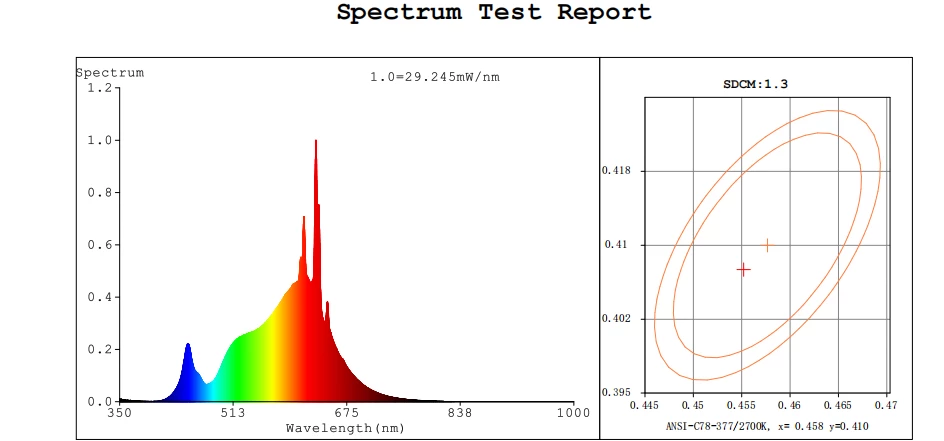What High Luminous Efficiency Doesn't Tell You ?
 A-ONE
A-ONE
 Oct 20,2025
Oct 20,2025

LED lights are everywhere, no matter if it's Europe or the Middle East—everyone wants energy-saving, eco-friendly options. Brands claim High Luminous Efficiency as the big sell, and buyers love the lower bills.
But please note: chasing max brightness may mean skimping on color quality (aim for CRI 90+) or long life. Don't just grab the highest lumens—check CRI and lifespan too. That way, you get comfy, true-color light that lasts.
What Affects LED Luminous Efficiency?
LED luminous efficiency measures how many lumens of light are produced per watt consumed (lm/W). It gauges how well an LED converts electricity into light. This isn't determined by one factor alone—it's a complex interplay from chip to system. Key influences include:
Chip performance: Semiconductor materials and design affect initial electro-optical efficiency.
Quantum efficiency: Internal photon generation and external light extraction.
Encapsulation: Phosphor, glue, and lens design impact final output.
Heat dissipation: Higher junction temperatures reduce efficiency and shorten lifespan.
Driver power supply: Conversion efficiency affects overall system energy use.

Pitfalls of Blindly Chasing High Luminous Efficiency
Imagine you have a high-performance LED with a base efficiency of 200 lm/W. If you add the right KSF phosphor mix, the lamp’s efficiency can go up by about 8%, reaching 216 lm/W. Or, by adjusting the color coordinates precisely, you could see a 6% boost to 212 lm/W.
These numbers might look tempting, but don’t rush to buy just yet. It’s important to pause and think about the bigger picture before choosing based only on luminous efficiency.
Boosting Luminous Efficiency with K Powder (KSF)
Principle:
K powder—chemically potassium fluorosilicate (K₂SiF₆:Mn⁴⁺)—is a narrow-band red phosphor activated by manganese ions (Mn⁴⁺). It mixes LED blue light + KSF red with yellow-green from standard phosphors to create white light.
But 3 risks:
- Reduced moisture resistance: In damp conditions, KSF hydrolyses, degrading the phosphor. This cuts red light, causes colour shift, and permanently lowers efficiency.
- Rapid light degradation: KSF is far less stable than traditional phosphors under heat and light. High junction temperatures accelerate its decay.
- Shorter warranty and lifespan: Products using KSF for ultra-high efficiency can't match the longevity of stable phosphor lamps at reasonable levels (180–200 lm/W).
Colour Coordinate Shifts for Higher Luminous Efficiency
Principle:
This is "visual trickery". Engineers tweak the formula to shift light towards the yellow-green peak of human eye sensitivity. Instruments read it as "brighter", inflating lm/W without real energy gain.
Problems:
- Green-tinted light: Over-emphasising green unbalances white light, creating an unhealthy, unpleasant hue.
- Plummeting CRI: Red spectrum is weakened for green boost. A full, continuous spectrum is vital for true colours—CRI can drop from >90 to <80, ruining quality lighting.
Relying on KSF trades lifespan for numbers; colour shifts sacrifice light quality. Both are consumer traps.
What Makes Lighting Reliable Long-Term?
By following clear selection principles and evaluating practical examples, users can identify solutions that balance functionality, durability, and cost-effectiveness. Below, we outline key principles and illustrate these concepts with reference products.
Picking Principles
- Target "suitable" luminous efficiency: For indoor downlights, aim for SMD: 90–110 lm/W; COB: 100–120 lm/W. This balances performance, lifespan, and cost—ultra-high risks fast decay and colour distortion.
- Prioritise colour rendering: High CRI ensures full-spectrum light and true colours, boosting visual comfort.
- Heat dissipation is key to lifespan: Quality designs (e.g. aluminium fins) control junction temperature, stabilising chips and phosphors.
- Reliable driver: The "heart" of the lamp—choose efficient, durable ones to avoid early failures.
- Long warranties: 5-year guarantees signal brand confidence in quality.
Reference to a Type
When applying the above principles, it’s helpful to refer to brands that prioritize balanced performance over hype. For instance, companies
focusing on tailored solutions often ensure product reliability through high-quality components and functional design.
For a hands-on example, consider the Aluminum surface Downlight Multi-functional DL87, which exemplifies a durable and reliable design:
Basic Specs: 5/8W power, AC220–240V input, and an luminous efficiency 110 lm/W output.
Versatility: Four selectable color temperatures (CCT) (2700K/3000K/4000K/5700K) and beam angles of 38° or 60°.
Highlights: Precision anti-glare optics for visual comfort; a matte-finished, sealed housing with IP65 rating (dustproof, waterproof, and fingerprint-resistant); and a quick-install ring terminal for easy setup.
The A-ONE DL87 downlight aligns with the “optimal” light efficiency range discussed earlier, while emphasizing thermal management and high color rendering index, avoiding issues like phosphor instability or color deviation.


Key Takeaways
Don't fall for "high luminous efficiency" pitfall in the LED market. Many products inflate numbers with unstable KSF phosphor or colour shifts—at the cost of lifespan and quality. That's irresponsible.
A reliable scheme focuses on suitable luminous efficiency, plus high LM80 lifespan, CRI, solid heat design, and robust drivers. Choose makers like A-ONE for premium lighting and long warranties—smart choice.
Question: Beyond High Luminous Efficiency Traps, What Else to Watch?
1. Chasing brightness while ignoring glare.
2. Overlooking invisible blue light hazards and flicker.
3. Mismatching beam angle to space.
We'll unpack these and more in future guides. Become a savvy "light manager" with ease.
Some content in this article references the following source:
[Wikipedia](https://en.wikipedia.org/wiki/Potassium_fluorosilicate)

 Home
Home Dim to Warm – Enjoy warm indoor sunshine during the cold winter
Dim to Warm – Enjoy warm indoor sunshine during the cold winter 


 2F, Building 2, Zhongda Industrial Park, Dongshan Industrial Street, Zhangmutou Town, Dongguan, Guangdong 523619, China
2F, Building 2, Zhongda Industrial Park, Dongshan Industrial Street, Zhangmutou Town, Dongguan, Guangdong 523619, China










